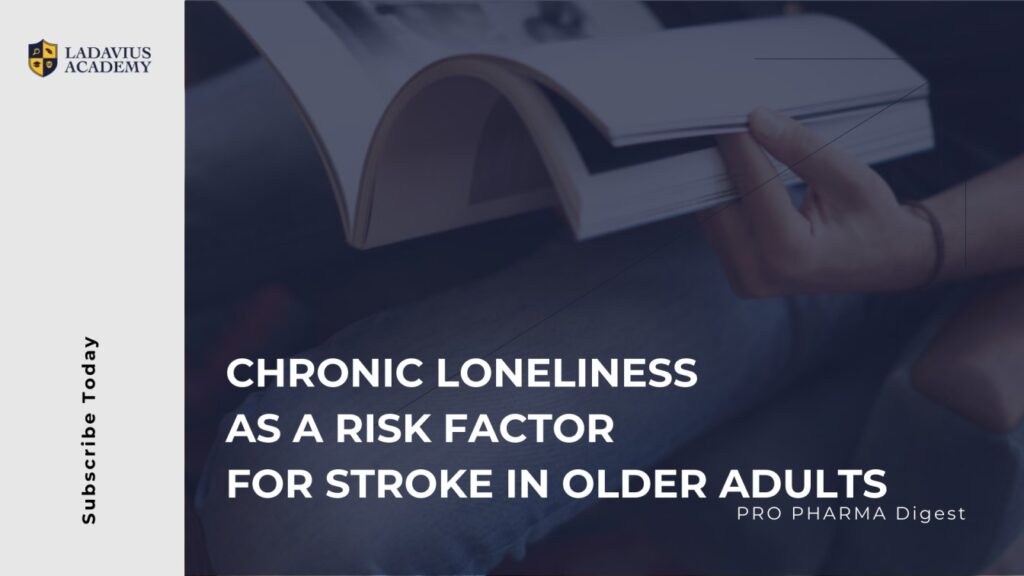Stroke is a leading cause of morbidity and mortality globally. Established risk factors such as hypertension and smoking play a crucial role, but they do not fully explain stroke incidence. Recent research suggests that social isolation and loneliness might be additional significant contributors, particularly for older adults. The study investigates the association between loneliness and stroke risk in a large, nationally representative sample of middle-aged and older adults in the United States. It extends beyond a single measure of loneliness by examining how changes in loneliness over time might impact stroke risk.
Measuring Loneliness with Precision
The study employs a validated three-item loneliness scale derived from a more comprehensive loneliness measure. This approach enhances the accuracy of assessment compared to single-item questions or direct inquiries about loneliness, which can be stigmatizing for some respondents. Loneliness scores were collected at two time points to capture potential changes over a four-year period. This method provides a more nuanced understanding of loneliness compared to solely relying on a baseline measurement.
Chronic Loneliness as a Key Determinant
Loneliness was examined in two ways:
- Baseline Loneliness: Levels of loneliness were assessed at the study’s initiation.
- Loneliness Change: Participants were categorized into four groups based on their loneliness scores at both time points:
- Consistently Low: Low scores at both measurements.
- Recent Onset: Low score at baseline, but high score at the second measurement.
- Remitting: High score at baseline but low score at the second measurement.
- Consistently High: High scores at both time points.
The key finding is a significant association between loneliness and increased stroke risk. Individuals with chronically high loneliness scores exhibited the highest risk compared to those with consistently low scores. Notably, short-term changes in loneliness (recent onset or remitting) did not significantly impact stroke risk.
This suggests that chronic loneliness, rather than short-term fluctuations, might be a more critical factor influencing stroke risk. It highlights the potential importance of addressing long-term feelings of isolation in older adults to mitigate their stroke risk.
Potential Mechanisms Underlying the Loneliness-Stroke Link
The study also explored potential mechanisms by which loneliness might influence stroke risk. Three key pathways were investigated:
- Physiological: Loneliness may lead to physiological changes that increase stroke risk, such as elevated blood pressure, heightened stress hormones, or a weakened immune system. Chronic social isolation and the emotional distress associated with loneliness may trigger these physiological responses.
- Behavioral: Chronically lonely individuals might be more likely to engage in unhealthy behaviors like smoking, poor sleep habits, or non-adherence to medication regimens, all of which contribute to stroke risk. Loneliness may lead to a lack of motivation or decreased social support, making it harder to maintain healthy habits.
- Psychosocial: Loneliness can lead to depression, anxiety, or social withdrawal, which may also play a role in stroke risk. The disruption of social connections and sense of belonging associated with loneliness can contribute to mental health struggles that further increase stroke risk.
The association between loneliness and stroke remained significant even after accounting for depression and social isolation, suggesting that loneliness has an independent effect. This emphasizes the need to consider loneliness as a separate risk factor for stroke prevention strategies.
Strengths, Limitations, and Future Directions
This study has several strengths, including a large sample size and the distinction drawn between loneliness and related concepts. However, limitations exist. The results may not be generalizable to younger populations or individuals outside the US. Additionally, as an observational study, it cannot definitively establish causality between loneliness and stroke. Finally, the study only examined loneliness changes over a four-year period, and a longer timeframe might be needed to fully understand the complex relationship.
Future research directions include:
- Investigating loneliness trajectories over a longer period to see if the association with stroke risk persists. Studying loneliness patterns across a wider timeframe can provide a more comprehensive picture of how chronic loneliness might influence stroke risk.
- Studying the biological mechanisms that might link loneliness to stroke. This could involve examining hormonal changes, inflammatory responses, or other physiological processes potentially influenced by chronic loneliness.
- Testing the effectiveness of interventions aimed at reducing loneliness and potentially preventing stroke. Developing and testing interventions that address social isolation and promote social connection in older adults could be crucial in stroke prevention strategies.
By understanding the connections between loneliness and stroke risk, researchers and healthcare professionals can develop strategies to help older adults manage loneliness and potentially reduce their risk of stroke. This could involve promoting social connection through community programs, social prescribing initiatives, or even technology-based solutions that help combat social isolation.
Posted June 2024.
Subscribe to our newsletter
Personalised by your preferences, subscribe to our newsletters to get the best of the Pharmaceutical Industry news in your inbox.
